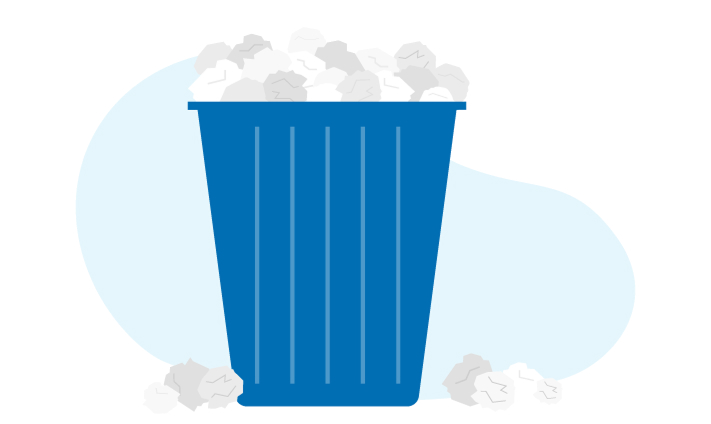As Canadians, we might disagree on a few things: politics, the best hockey team, and whether we should make daylight saving time permanent. But when it comes to planning for retirement, an RRSP account remains the most popular way to save.
That’s because it’s a win-win for your hard-earned money. While potentially lowering your annual tax bill, investing in RRSPs also brings compounded, tax-free growth on your savings while the money remains in your account. And the best part? You can start contributing to an RRSP investment as soon as you begin earning an income and filing a tax return with the Canada Revenue Agency (CRA). To help you get going, here’s a look at the Canadian RRSP basics.
What is RRSP investing?
An RRSP, or a Registered Retirement Savings Plan, is a savings plan that you can contribute to over the course of your working life. When you retire, you can convert your account to a Registered Retirement Income Fund (RRIF) and withdraw an income.
In the meantime, you can treat your RRSP like a regular savings account by simply depositing the money and leaving it untouched until retirement. Or, you have the option to invest your money in common RRSP investment vehicles, like segregated funds, mutual funds, and more.
What are the RRSP benefits you can bank on?
An RRSP is registered, meaning that the CRA acknowledges the account – and your efforts at saving for your future. As a result, you’re rewarded with tax benefits, which you can take advantage of as soon as you open your RRSP account. Here are the two major benefits:
- Pay less income tax: Each year, the amount of money you contribute to your RRSP (up to your allowable limit) can be deducted from your taxable income for that year – or a later year, if preferred, to pay less in taxes when your income may be higher. Simply put, you’ll receive either a bigger tax refund or a smaller tax bill each year that you contribute. Eventually, you will pay tax when you withdraw the money from your RRSP account, but it will likely be at a lower tax rate because of your lower income in retirement.
- Enjoy tax-deferred investment growth: More than simply lowering the amount of income that you’ll be taxed on in the first place, you won’t pay taxes on your invested money – and the returns you earn inside an RRSP – until you withdraw it. In the meantime, any RRSP investment gains grow tax-free, helping you reach your savings goals quicker.
So, what is RRSP investing? It’s an easy and effective way to save for your future. Learn more about how an RRSP works.
What can an RRSP be used for?
Your retirement
True to its namesake, RRSPs are designed mainly as a way to encourage Canadians to save for retirement. As the Boomer generation continues to retire from work, government pension plans (CPP and OAS) will ultimately receive fewer contributions, meaning that the government pension benefits that subsequent generations receive may not be as generous as expected. You’ll need a retirement income – your own RRSP savings – to supplement your government pension.
RRSP benefits are strongest when you use the funds as retirement income by converting your RRSP to a Registered Retirement Income Fund (RRIF) or an annuity. You must convert by the end of the calendar year in which you turn 71, but you can do it sooner if you retire earlier.
Your first home or continued education
The only way to withdraw from your RRSP without tax implications is if you put the money toward your first home or continuing your education. Here’s a quick outline of these benefits:
RRSP Home Buyer’s Plan
The first-time home buyer RRSP benefit helps you with the down payment required to purchase or build your first home. You can borrow up to $60,000, tax-free, from your RRSP for down payment financing. To completely escape tax penalties, however, you must repay the borrowed amount to your RRSP in equal increments over 15 years.
RRSP Lifelong Learning Plan
Thinking about continuing your education? Similar to the RRSP Home Buyer’s Plan, you can make an RRSP withdrawal for education. You can take up to $10,000 per year from your RRSP account to pay for full-time education or training – for you or your spouse. Starting the year after your first withdrawal, to escape tax penalties, you’ll have to pay these funds back in equal increments over the next 10 years.
Planning for your kids’ education? Find out how an RESP (Registered Education Savings Plan) can help.
Your other financial goals
As long as your RRSP contributions are not locked in, you can use the money whenever you want, for whatever you want. But there’s a catch. Under most circumstances, withdrawing before retirement means the money you take out will be subject to taxation at your current tax rate. Therefore, this is not recommended. If you’re looking to save for more-immediate goals, find out how a TFSA can help.
When is the best time to start?
The earlier you start contributing to an RRSP the better, thanks to compound interest and upward market trends over time. If you invest money at age 26, for example, your sum has the potential to grow much larger than the same amount invested at age 36. And you don’t need a lot to get going. With Co-operators, you can start saving as little as $50 a month in an RRSP.
At the same time, you’re almost never too old to stock up on your retirement stash. You can contribute to your RRSP up until December 31 of the year you turn 71. Those who start contributing in their 40s, 50s and even 60s can still save for retirement.
So, now that you know the basics, are you interested in taking a deeper dive?
I’d like more RRSP details
I’d rather explore TFSAs
*In the province of Quebec, the authorized representatives are Financial Security Advisors who have been duly certified by the Autorité des marchés financiers. The information contained in this report was obtained from sources believed to be reliable; however, we cannot guarantee that it is accurate or complete and it should not be considered personal taxation advice. We are not tax advisors and we recommend that clients seek independent advice from a professional tax advisor on tax related matters. Mutual funds are offered through Co-operators Financial Investment Services Inc. to Canadian residents except those in Quebec and the territories. Segregated funds and annuities are administered by Co-operators Life Insurance Company. Co-operators Life Insurance Company and Co-operators Financial Investment Services Inc. are committed to protecting the privacy, confidentiality, accuracy and security of the personal information that we collect, use, retain and disclose in the course of conducting our business. Visit www.cooperators.ca/en/Privacy for more information. Co-operators® is a registered trademark of The Co-operators Group Limited..





 Home
Home
 Auto
Auto
 Life
Life
 Recreation
Recreation

